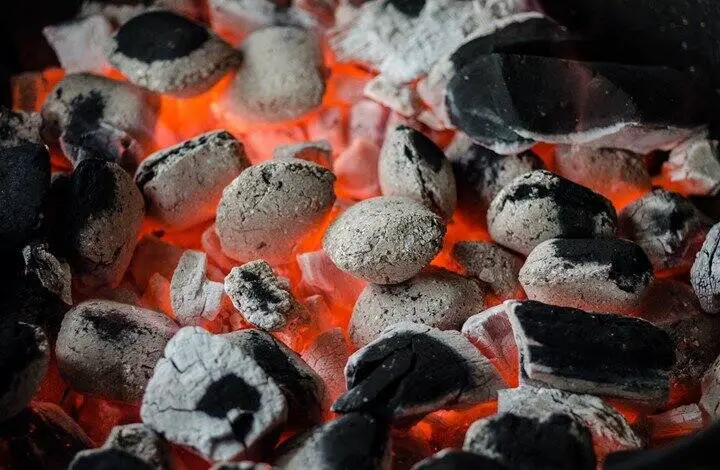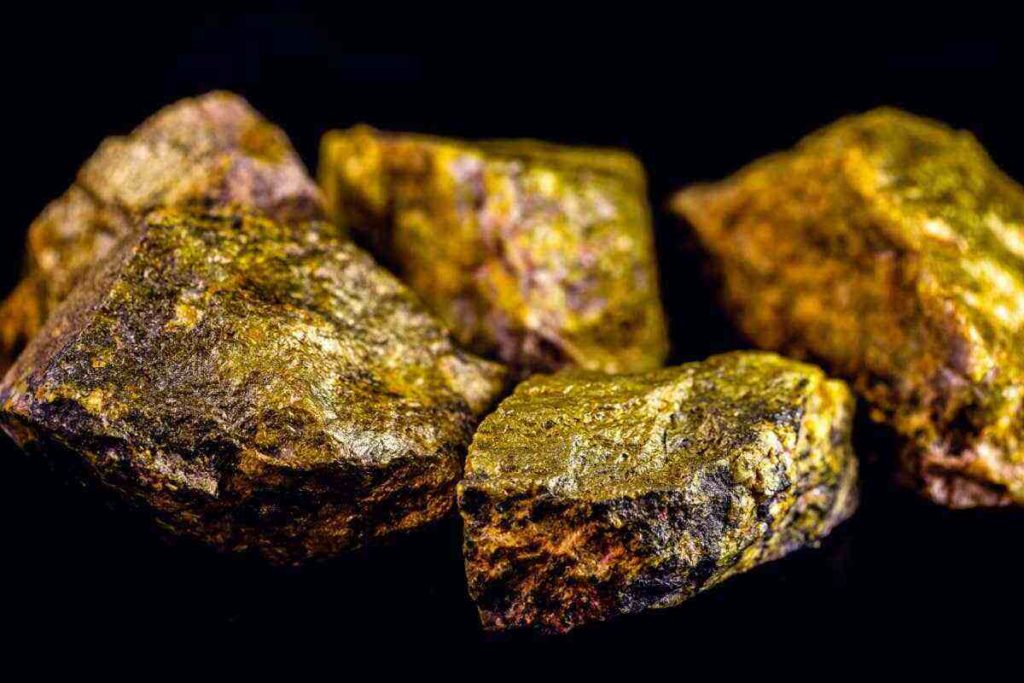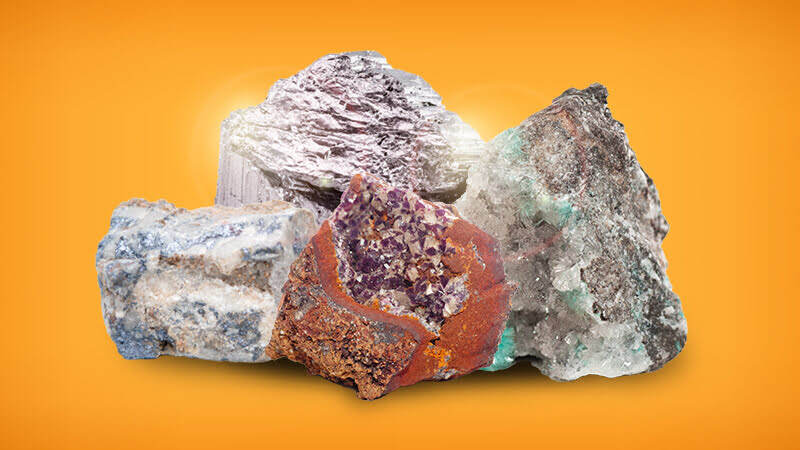Wanna know what are the examples of non-renewable resources? If yes, then you are at the right place at the very right time. Fundamentally, speaking, there are two types of natural resources that simply exist without any actions of humankind. These are renewable and non-renewable resources. So, what are non-renewable resources?
By definition, non-renewable resources are a type of natural resource that cannot be replenished over time. In other words, one can simply say that they are limited in supply. That’s why we sometimes also call them finite resources. Apart from generating electricity, some of the other uses of non-renewable resources are in transportation, construction, manufacturing, and, so on.
Some of the advantages of non-renewable resources are: They are easy to extract and store, reliable, low installation cost, efficient, and, so on. Some of the disadvantages of non-renewable resources are: They are limited, contribute to global warming, cause pollution, contaminates water, can cause acid rain, and, so on.
Non-renewable Resources Examples – Top 6
No wonder there can be so many types of non-renewable energy resources. Out of all, these are the top 6 non-renewable resources that I will be discussing with you in a detailed format. Therefore, without wasting any more time, let’s dive right in…!!!
- Crude Oil
- Coal
- Natural Gas
- Nuclear Fuel
- Oil Shale
- Rare Earth Element
Crude Oil

The very first one in my list of top 6 examples of non-renewable energy resources is Crude Oil. Crude Oil (also known as Petroleum) is one of the most widely used types of non-renewable resources. They are found beneath the earth’s surface buried millions of years ago. Hence also known as fossil fuel.
Crude oil or Petroleum products are mostly made up of hydrocarbons. The other components include nitrogen, oxygen, metal, and sulfur. As per the Our World in Data, in 2019, more than 33% of the world’s energy need was fulfilled by the burning of petroleum products.
Advantages of Crude Oil
Some of the advantages of using crude oil or petroleum are:
- Cheap
- Easy to extract
- High energy density
- Wide range of applications
- Efficient
- Reliable, etc.
Disadvantages of Crude Oil
Some of the disadvantages of using crude oil are:
- Non-renewable energy resource
- Can cause acid rain
- Contributes to global warming
- Highly flammable, etc.
Uses of Crude oil
Some of the uses of Crude oil are:
- Elecetrcicty generation
- Petrochemical industries
- Transportation
- Agriculture
- Manufacturing, etc.
Coal

Coal is a type of solid non-renewable resource that can be easily found everywhere on earth. They are primarily made when dead organic matter decays buried beneath layers of sediment by heat and pressure over millions of years. Hence, also comes under the category of fossil fuels. By definition, there are four types of coal.
These are Lignite, Sub-bituminous, Bituminous, and Anthracite. Lignite is by far the lowest rank of coal. Anthracite, on the other hand, is the highest rank of coal. As per the Our World in Data, in 2019, more than 27% of the world’s energy need was fulfilled by the burning of coal and coal products.
Advantages of Coal
Some of the advantages of using coal are:
- Cheap and Affordable
- Coal is Reliable
- Very high load factor
- Easy to store and transport
- Consumable by-products
- Easy burning process, etc
Disadvantages of Coal
Some of the disadvantages of using coal are:
- Caol is Non-renewable
- Huge greenhouse gas emission
- Coal mining has an environmental impact
- Mining, sometimes, releases deadly gases
- Potentially radioactive, etc.
Uses of Coal
Some of the uses of coal are:
- Electricity generation
- Soap and paper industry
- Hydrogen production
- Cement industry
- Textile industry, etc.
Natural Gas

Just like Coal and Crude Oil, Natural Gas is also made when dead plants and animal matter decay buried beneath layers of sediment exposed to intense heat and pressure over millions of years. In fact, they are found almost at a similar place as petroleum or crude oil.
Natural gas is practically odorless as well as colorless in nature. However, for easy and early leakage detection, a harmless chemical called Mercaptan is added to make it smell similar to rotten eggs.
As per the Our World in Data, in 2019, more than 24% of the world’s energy need was fulfilled by utilizing natural gas products like Compressed Natural Gas (CNG) or Liquified Petroleum Gas (LPG).
Advantages of Natural Gas
Some of the advantages of using natural gas are:
- Abundantly available more than petroleum
- Cheap and Affordable
- Natural gas is Reliable
- Easy to store and transport
- Consumable by-products, etc.
Disadvantages of Natural Gas
Some of the disadvantages of using natural gas are:
- Non-renewable resource
- Expensive pipelines
- Greenhouse gas emission
- Leakage issue
- Pollutes groundwater, etc.
Uses of Natural Gas
Some of the uses of natural gas are:
- Transportation
- Cooking
- Heating water and building
- Fertilizers
- Animal and fish feed
- Industrial purposes, etc.
Nuclear Fuel

The very next one in my list of top 6 non-renewable resources examples is Nuclear fuel. You would be amused to know that the energy that we get from fusing or fissioning out nuclear fuel is categorized under renewables. However, the fuel we use to get nuclear energy is itself non-renewable.
The nuclear fuel that we use for the process of nuclear fission is Uranium or its isotopes which is one of the heaviest among all the known elements. The nuclear fuel, on the other hand, that we use for the process of nuclear fusion is Hydrogen or its isotopes which is one of the lightest among all the known elements.
To sum up, only heavier elements are fissionable. On the flip side, only lighter elements are fusible. According to the available data, in 2019, approximately 4.27% of the world’s energy need was fulfilled by nuclear power. Whereas, more than 10% of the world’s electricity was produced by nuclear power plants.
Advantages of Nuclear Energy
Some of the advantages of using nuclear energy or nuclear fuel are:
- Cheaper and Reliable
- Nuclear Energy is Clean
- Wide range of non-explosive and non-electric applications
- Improves National Security
- Reduces greenhouse gases
- Reusable Fuel
- Provides stability in Energy Sector, etc.
Disadvantages of Nuclear Energy
Some of the disadvantages of using nuclear fuel or energy are:
- The danger of accidents like Japan’s Fukushima Daiichi nuclear disaster
- The nuclear power plant is too expensive to build
- Burden of handling radioactive nuclear waste.
- A real threat of nuclear war.
- Nuclear fuel is non-renewable, etc.
Uses of Nuclear Energy
Some of the uses of nuclear fuel or energy are:
- Nuclear Weapons
- Electricity Generation
- Space Exploration
- Nuclear Medicine
- Food processing Agricultural Uses
- Industrial Applications, etc.
Oil Shale

Often dubbed as an alternative to conventional crude oil, Oil Shale is a type of sedimentary rock from which unconventional oil can be produced. To produce Shale Oil, sedimentary rock has to be heated to a sufficiently high temperature.
As a result, the chemical process of pyrolysis takes place which in turn separates liquid oil (shale oil) from combustible shale gas. Not to mention, the process of extracting unconventional oil from Oil Shale is much costly as well as labor-intensive than the process of extracting conventional crude oil.
That is why we only use shale oil in abundance when the price of crude oil is highest in the international market. As far as shale oil reserve is concerned, the current known oil shale reserves can easily cover the world’s energy demand for up to a century or so.
Advantages of Oil Shale
Some of the advantages of using oil shale are:
- Balances oil prices
- Reduces monopoly of crude oil
- Provides employment
- Easy burning process, etc.
Disadvantages of Oil Shale
Some of the disadvantages of using Oil Shale are:
- Non-renewable resource
- Greenhouse gas emission
- Pollutes land and water
- Extracting shale oil needs enormous amounts of fresh water, etc.
Uses of Oil Shale
Some of the uses of shale oil are:
- Electricity generation
- Chemical industry
- District heating
- Marina fuel
- Manufacturing sector, etc.
Rare Earth Elements

Last but not least one in my list of top 6 non-renewable energy resources are Rare Earth Elements. In total, 17 rare earth elements can be easily seen in almost all the consumer electronics available in the market. Not to mention, just because all of the rare earth elements are metals, we also call them Rare Earth Metals.
Out of all, Cerium is the most abundant one. Promethium, on the other hand, is the least available one. Just to let you know that China is currently the biggest producer as well as the exporter of rare earth elements.
Advantages of Rare Earth Elements
Some of the advantages of using rare earth elements are:
- Clean Energy
- Demand is skyrocketing
- Creates job opportunities
- Improves national security
- Provides stability in the energy sector, etc.
Disadvantages of Rare Earth Elements
Some of the disadvantages of rare earth elements are:
- Vey high mining cost
- Environmental damage
- Pollution
- Rare earth elements are Non-renewable
- Risks to human safety, etc.
Uses of Rare Earth Elements
Some of the uses of rare earth elements are:
- Solar panel manufacturing
- Rechargeable Batteries
- Computer memory
- Catalytic converters
- Magnets
- Glass polishing
- Fluorescent lighting, etc.
That’s it for this post. If you like this article, share it if you like, like it if you share it. You can also find us on Mix, Twitter, Pinterest, and Facebook. Hey man, If you have come this far, do give us feedback in the comment section. It would make my day. You can also make a donation. Your donations will help us to run our website and serve you BETTER. Cheers!!!
